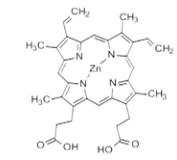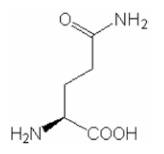Pall颇尔滤膜 4214 SYRINGE FILTER HT 0.2UM PK1000 1069 8553
日度归档:2024年2月29日
Amresco 0417-25,000U PEROXIDASE, HORSERADISH, RZ 1.0 辣根过氧化物酶, RZ 1.0
Amresco 0417-25,000U PEROXIDASE, HORSERADISH, RZ 1.0 辣根过氧化物酶, RZ 1.0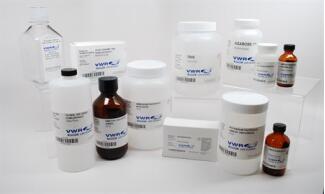
抗肝病药成分
| 产品编号 | 产品名称 | 产品规格 | 产品等级 | 产品价格 |
| 167-13651 | Protoporphyrinato Zinc 锌原卟啉 | 10mg | - | - |
| 076-00521 | L(+)-Glutamine L(+)-谷氨酰胺 | 5g | - | - |
| 074-00522 | L(+)-Glutamine L(+)-谷氨酰胺 | 25g | - | - |
| 072-00523 | L(+)-Glutamine L(+)-谷氨酰胺 | 100g | - | - |
| 078-00525 | L(+)-Glutamine L(+)-谷氨酰胺 | 500g | - | - |
抗肝病药成分
◆锌原卟啉(Protoporphyrinato Zinc)
|
CAS No. 15442-64-5 C34H32N4O4Zn=626.05 可溶性溶媒:N,N- 二甲基甲酰胺、吡啶 用途(作用):能促进肝蛋白合成,抑制肝过氧化氢酶活性降低。 |
|
◆L(+)-谷氨酰胺(L(+)-Glutamine)
|
CAS No. 56-85-9 C5H10N2O3=146.15 纯度:99.0+%(Titration) 可溶性溶剂:水 用途(作用):和氨结合,降低氨的作用。 |
|
相关资料详情请查看:http:///pdf/show/80.html
荧光染料C24B0 BDP TMR alkyne 10 mg
lumiprobe荧光染料C24B0 BDP TMR alkyne 10 mg lumiprobe荧光染料BDP TMR 炔基 10 mg 310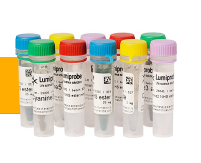
聚合物标准品—APSC
上海金畔生物提供聚合物标准品—APSC
|
品名
|
分子量
|
规格
|
市场价
|
|
|
聚苯乙烯标准品162-2000万
|
低分子量
|
162-5400
|
250mg
|
询价
|
|
中分子量
|
6000-100k
|
250mg
|
询价
|
|
|
高分子量
|
110k-1390k
|
250mg
|
询价
|
|
|
超高分子量
|
2000k-20000k
|
250mg
|
询价
|
|
|
聚乙烯标准品
|
低分子量
|
800-34K
|
250mg
|
询价
|
|
低分子量
|
86-64K
|
1g
|
询价
|
|
|
超高分子量
|
800K-115K
|
1g
|
询价
|
|
|
窄分子量分布
|
6K-115K
|
200mg
|
询价
|
|
|
宽分子量分布 低密度
|
52K-150K
|
1g
|
询价
|
|
|
宽分子量分布 高密度
|
102K
|
1g
|
询价
|
|
|
聚丙烯酸钠标准品 1300-170万
|
低分子量
|
1K-245K
|
250mg
|
询价
|
|
高分子量
|
300K-1700K
|
250mg
|
询价
|
|
|
宽分子量分布
|
1K-1200K
|
1g
|
询价
|
|
|
聚乙二醇标准品 62-29450
|
低分子量
|
62-1000
|
1g
|
询价
|
|
高分子量
|
1K-30K
|
1g
|
询价
|
|
|
聚氧乙烯标准品 24000-175万
|
窄分子量分布
|
25K-1000K
|
200mg
|
询价
|
|
宽分子量分布
|
120K-2000K
|
1g
|
询价
|
|
|
聚苯乙烯磺酸钠标准品
1430-285万
|
窄分子量分布
|
3K-5640K
|
250mg
|
询价
|
|
宽分子量分布
|
65K-700K
|
1g
|
询价
|
|
|
葡聚糖(右旋糖酐)标准品 180-740万
|
低分子量
|
180-36K
|
1g
|
询价
|
|
中分子量
|
41K-145K
|
1g
|
询价
|
|
|
高分子量
|
160K-440K
|
1g
|
询价
|
|
|
高分子量
|
515K-1300K
|
1g
|
询价
|
|
|
超高分子量
|
1900K-5900K
|
1g
|
询价
|
|
|
宽分子量分布
|
1K-6100K
|
1g
|
询价
|
|
|
套装,不拆分
|
1270-676K
|
800mg*10
|
询价
|
|
|
羟乙基淀粉标准品 6k-280万
|
低分子量
|
6K-200K
|
250mg
|
询价
|
|
高分子量
|
220K-2800K
|
250mg
|
询价
|
|
|
普鲁兰多糖(聚麦芽三糖)标准品(apsc)
|
分子量
|
5900-96万
|
200mg
|
询价
|
|
套装,不拆分
|
5900-788K
|
200mg*8
|
询价
|
|
|
套装,不拆分
|
70K-825K
|
200mg*20
|
询价
|
|
|
普鲁兰多糖标准品Pullulan,shodex
|
套装,不拆分
|
5.9K-708K
|
200mg*8
|
询价
|
|
羟丙基纤维素标准品
|
||||
|
10K-50K
|
250mg
|
询价
|
||
|
宽分子量分布
|
30K-865K
|
1g
|
询价
|
|
|
宽分子量分布
|
62700-94200
|
1g
|
询价
|
|
|
羧甲基纤维素钠标准品
|
109200-11600
|
1g
|
询价
|
|
|
聚2-乙烯吡啶标准品
|
3300-130万
|
250mg
|
询价
|
|
|
聚烯丙基胺盐酸盐标准品
|
1g
|
询价
|
||
|
壳聚糖/几丁聚糖标准品
|
326700-141400
|
1g
|
询价
|
|
|
黄原胶 标准品
|
250mg
|
询价
|
||
|
瓜尔胶 标准品
|
250mg
|
询价
|
||
|
羟乙基纤维素标准品
|
4万-6万
|
250mg
|
询价
|
|
|
聚甲基丙烯酸甲酯标准品820-610万
|
低分子量
|
700-85k
|
250mg
|
询价
|
|
中高分子量
|
110k-2100k
|
250mg
|
询价
|
|
|
聚丁二烯标准品
|
500-700k
|
250mg
|
询价
|
|
|
聚异丁烯标准品
|
低分子量
|
226-1400
|
250mg
|
询价
|
|
中分子量
|
3000-85k
|
250mg
|
询价
|
|
|
高分子量
|
90k-436k
|
250mg
|
询价
|
|
|
超高分子量
|
570k-2600k
|
250mg
|
询价
|
|
|
聚碳酸酯标准品
|
4200-46100
|
250mg
|
询价
|
|
|
聚丙二醇标准品
|
76-53000
|
1g
|
询价
|
|
|
聚醋酸乙烯标准品
|
17000-275000
|
1g
|
询价
|
|
|
聚氯乙烯标准品
|
21500-155000
|
200mg/1g
|
询价
|
|
|
聚乙烯醇缩丁醛标准品
|
66500-167000
|
1g
|
询价
|
|
|
聚二甲基硅氧烷标准品 162-100万
|
低分子量
|
162-35k
|
500mg
|
询价
|
|
中分子量
|
40k-150k
|
500mg
|
询价
|
|
|
聚乙烯对苯二甲酸酯标准品
|
27400-63500
|
1g
|
询价
|
|
|
聚对苯二甲酸丁二酯标准品
|
16150-54600
|
1g
|
询价
|
|
|
醋酸纤维素标准品
|
250mg
|
询价
|
||
|
三醋酸纤维素标准品
|
250mg
|
询价
|
||
|
聚己内酰胺(尼龙6)标准品
|
17200-41000
|
1g
|
询价
|
|
|
聚已二酰已二胺及纤维(尼龙66)标准品
|
32300-11万
|
250mg
|
询价
|
|
|
聚丙烯腈标准品
|
85250-193100
|
500mg
|
询价
|
|
|
偏氟乙烯-六氟丙烯标准品
|
20万-70万
|
1g
|
询价
|
|
|
聚砜标准品
|
1g
|
询价
|
||
|
聚乳酸标准品
|
3000-140万
|
250mg
|
询价
|
|
|
聚丙烯标准品
|
低分子量
|
800-34K
|
250mg
|
询价
|
|
聚丙烯标准品
|
宽分子量分布
|
800-800K
|
1g
|
询价
|
|
聚四氢呋喃标准品
|
1250-8950
|
1g
|
询价
|
|
|
聚甲基丙烯酸钠标准品
|
套装
|
1250-947K
|
250mg*10
|
询价
|
|
宽分子量分布
|
8K-690K
|
250mg
|
询价
|
|
|
聚丙烯酰胺标准品 3350-900万
|
非离子型
|
3350-1100K
|
250mg
|
询价
|
|
非离子型
|
3200-9000K
|
500mg
|
询价
|
|
|
聚乙烯醇标准品
|
5800-20万
|
1g
|
询价
|
|
Whatman 滤膜 8115-2250 CF5 22MMX50M
Whatman 滤膜 8115-2250 CF5 22MMX50M CF5 22MMX50M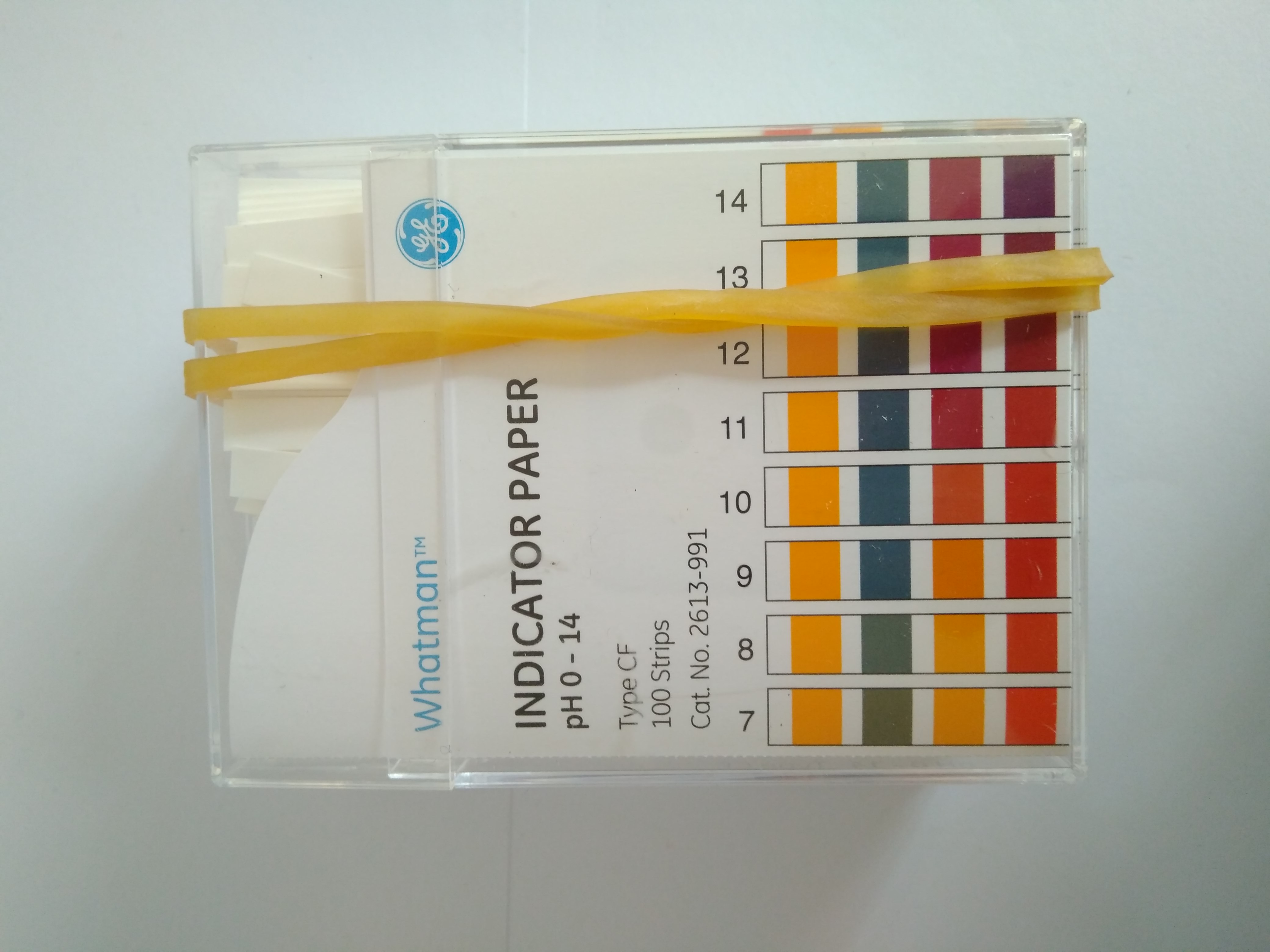
荧光染料41720 Alkyne NHS ester (hexynoic acid NHS ester) 25 mg
lumiprobe荧光染料41720 Alkyne NHS ester (hexynoic acid NHS ester) 25 mg lumiprobe荧光染料炔基 羧基活性酯 (hexynoic acid 羧基活性酯) 25 mg 95
内切-1,3 – β-D-葡聚糖酶(大麦)(重组) endo-1,3-β-D-Glucanase (barley) (Recombinant) 货号:E-LAMHV Megazyme中文站
内切-1,3 – β-D-葡聚糖酶(大麦)(重组)
英文名:endo-1,3-β-D-Glucanase (barley) (Recombinant)
货号:E-LAMHV
规格:5000 Units
High purity recombinant endo-1,3-beta-Glucanase (Barley) for use in research, biochemical enzyme assays and in vitrodiagnostic analysis.
EC 3.2.1.39
CAZy Family: GH17
Recombinant. From barley (Hordeum vulgare).
In 50% glycerol.
Specific activity: ~ 100 U/mg (40oC, pH 5.0 on laminarin)
Store at -20oC.
暂无问题解答
暂无视频
水溶性荧光染料413 Sulfo-Cyanine3 tetrazine 25 mg
水溶性lumiprobe荧光染料413 Sulfo-Cyanine3 tetrazine 25 mg 水溶性lumiprobe荧光染料Sulfo-Cyanine3 四嗪 25 mg 690
nunc 249952 V96 WITH LID MICROWELL PLATE SI V96微孔板,已灭菌有盖,10/180
nunc 249952 V96 WITH LID MICROWELL PLATE SI V96微孔板,已灭菌有盖,10/180
Amresco 0499-100ML SULFURIC ACID 硫酸
Amresco 0499-100ML SULFURIC ACID 硫酸
Whatman 滤膜 8121-6971 LF1 12MM X 103.5M PK1
Whatman 滤膜 8121-6971 LF1 12MM X 103.5M PK1 LF1 12MM X 103.5M PK1
VA-044
| 产品编号 | 产品名称 | 产品规格 | 产品等级 | 产品价格 |
| 017-19362 | 2,2′-Azobis[2-(2-imidazolin-2-yl)propane]dihydrochloride 偶氮二异丁咪唑啉盐酸盐 |
25g | ||
| 011-19365 | 2,2′-Azobis[2-(2-imidazolin-2-yl)propane]dihydrochloride 偶氮二异丁咪唑啉盐酸盐 |
500g |
VA-044
2,2'-Azobis[2-(2-imidazolin-2-yl)propane]dihydrochloride
中文名称:偶氮二异丁咪唑啉盐酸盐
CAS NO.:27776-21-2
英文缩写:AIPC / AIBI
◆特征
● 非腈、低温型水溶性偶氮重合开始剂
● 可溶于水、甲醇
● 10小时半减期温度44℃(水中)
◆化学名
2,2'-Azobis[2-(2-imidazolin-2-yl)propane]dihydrochloride
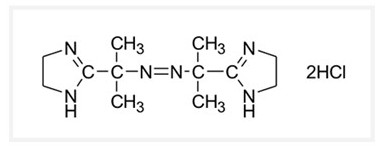
CAS NO. 27776-21-2
分子量 = 323.27
◆物理性质
|
外观 |
白色~淡黄色 |
|
融点 |
188~193℃(分解) |
|
10小时半减期温度 |
44℃(水中) |
|
活化性能量 |
108.2K J/mol K |
|
频率因子(ln A) |
30.19 |
|
溶解性 |
水:易溶 |
|
SADT |
140℃ |
|
毒性(LG50) |
3,200 mg/kg(经口大鼠[雄]) |
◆包装、保存条件
20kg (4×5kg) 纸箱
500g 纸盒
30℃以下保存
◆相关法规·安全性
|
剧毒法 |
不符合 |
|
消防法 |
不符合 |
|
化审法 |
5-5870、1-215 |
|
安卫法 |
已存在 |
|
TSCA |
Listed |
|
EINECS |
248-655-3 |
Whatman 滤膜 5201-330 201 33CM 100/PK
Whatman 滤膜 5201-330 201 33CM 100/PK 201 33CM 100/PK
Whatman 滤膜 29167246 MUP 0.45uM PTFE 100/PK – PROMO20
Whatman 滤膜 29167246 MUP 0.45uM PTFE 100/PK – PROMO20 MUP 0.45uM PTFE 100/PK – PROMO20
K677 AGAROSE I™-TBE BLEND 1.5\%琼脂糖 AMRESCO K677
名称:K677 AGAROSE I™-TBE BLEND 1.5\%琼脂糖
品牌:AMRESCO
订货号:K677
![]()
咨询此产品
产品介绍
K677 AGAROSE I™-TBE BLEND 1.5\%
Grade:BIOTECHNOLOGY GRADE
- Storage Condition:
- ROOM TEMPERATURE
Whatman 滤膜 10538882 SHARKSKIN 10INx750FT 1/PK
Whatman 滤膜 10538882 SHARKSKIN 10INx750FT 1/PK SHARKSKIN 10INx750FT 1/PK
水溶性荧光染料E53B0 Sulfo-Cyanine7 alkyne 50 mg
水溶性lumiprobe荧光染料E53B0 Sulfo-Cyanine7 alkyne 50 mg 水溶性lumiprobe荧光染料Sulfo-Cyanine7 炔基 50 mg 1270
Whatman 滤膜 10534408 GRADE 470 4INx250FT 1/PK
Whatman 滤膜 10534408 GRADE 470 4INx250FT 1/PK GRADE 470 4INx250FT 1/PK
Whatman 滤膜 11463410 PROFILL 25/0.2 RC
Whatman 滤膜 11463410 PROFILL 25/0.2 RC PROFILL 25/0.2 RC
BD培养基 211436 500 g EA BBL Motility Test Medium 瓶装运动性试验培养基
BD培养基 211436 500 g EA BBL Motility Test Medium 瓶装运动性试验培养基 
Amresco 0231-500ML DIMETHYL SULFOXIDE (DMSO) 二甲基亚砜 (DMSO)
Amresco 0231-500ML DIMETHYL SULFOXIDE (DMSO) 二甲基亚砜 (DMSO)
BD培养基 279220 2 kg EA Difco Columbia Blood Agar Base 哥伦比亚血琼脂基础
BD培养基 279220 2 kg EA Difco Columbia Blood Agar Base 哥伦比亚血琼脂基础 
Axygen试剂盒 AP-E96-P-4G AxyPrep Easy-96质粒DNA小量试剂盒
Axygen试剂盒 AP-E96-P-4G AxyPrep Easy-96质粒DNA小量试剂盒 4×96 prep 盒 1260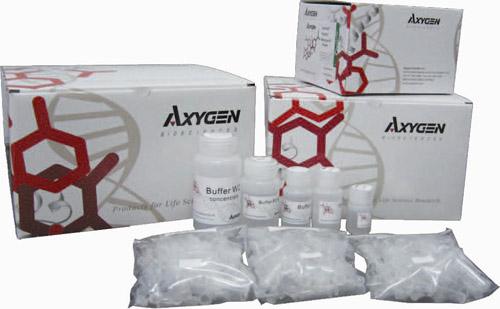
酒石酸检测试剂盒 Tartaric Acid Assay Kit 货号:K-TART Megazyme中文站
酒石酸检测试剂盒
英文名:Tartaric Acid Assay Kit
货号:K-TART
规格:200 assays (manual) / 2000 assays (microplate)
Colourimetric method for the determination of myo-Inositol
in various sample matrices
Principle:
(myo-inositol dehydrogenase)
(1) myo-Inositol + NAD+ →
2,4,6/3,5-pentahydroxycyclohexanone + NADH + H+
(diaphorase)
(2) INT + NADH + H+ → NAD+ + INT-formazan
Kit size: 50 assays
Method: Spectrophotometric at 492 nm
Reaction time: ~ 10 min
Detection limit: 0.8 mg/L
Application examples:
Animal feeds, food, baby milk formulation and other materials
Method recognition: Novel method
Q1. There is an issue with the performance of the kit; the results are not as expected.
If you suspect that the Megazyme test kit is not performing as expected such that expected results are not obtained please do the following:
- Ensure that you have tested the standard sample that is supplied with the Megazyme test kit.
- Send the results of the kit standard, blank samples and the results obtained for your sample, in the relevant MegaCalc spreadsheet (if available) to Megazyme (cs@megazyme.com). Where available the relevant MegaCalc spreadsheet can be downloaded from where the product appears on the Megazyme website.
- State the kit lot number being used (this is found on the outside of the kit box).
- State which assay format was used (refer to the relevant page in the kit booklet if necessary).
- State exact details of any modifications to the standard procedure that is provided by Megazyme.
- State the sample type and describe the sample preparation steps if applicable.
Q2. Should the pH of the sample be adjusted even for samples in acidic media?
The pH of the assay solution after the sample is added should be the same as that of the assay buffer that is supplied with the kit.
Low sample volumes (e.g. 0.1 mL) are not likely to affect the pH of the assay solution and therefore may not require pH adjustment.
Samples above 0.1 mL are more likely to affect the pH of the assay solution and therefore the pH of these samples should be adjusted as described in the data booklet, prior to addition to the assay.
Q3. Can you explain, step by step, how to follow the method and perform the kit assay?
For users who are not familiar with how to use the Megazyme tests kits then it is recommended that they follow this example, e.g. D-Fructose/D-Glucose Assay kit K-FRUGL (http://secure.megazyme.com/D-Fructose-D-Glucose-Assay-Kit):
1. The kit components are listed on pages 2-3 of the kit booklet.
2. Prepare the kit reagents as described on page 3.
3. For separate measurements of glucose and fructose follow procedure A on page 4.
4. Pipette the volumes listed for water, sample, solution 1 and solution 2 into 3 mL, 1 cm pathlength cuvettes. Duplicate sample assays and duplicate blanks are recommended. Mix the contents of each cuvette by inversion (seal the cuvette using parafilm or a plastic cuvette cap – do not use a finger) then after ~3 min record the first absorbance reading of each cuvette at 340 nm (this is reading A1).
5. Then add suspension 3 and mix the contents of each cuvette by inversion. Incubate for 5 minutes then record the absorbance reading of each cuvette at 340 nm (this is reading A2). NB. It is essential that the reaction is compete. To assess this, record the absorbances at ~ 2 minute intervals and until the absorbance plateaus. A stable absorbance indicates that the reaction is complete. If the absorbance continues to increase then continue to record absorbances until it plateaus and only then record absorbance reading A2.
6. Then add suspension 4 and mix the contents of each cuvette by inversion. Incubate for 5 minutes then take absorbance reading of each cuvette at 340 nm (this is reading A3). NB. As above, assess that the reaction has completed by take subsequent readings at ~2 min intervals.
7. For simple, automated results analysis, input the absorbance readings (A1, A2, A3) for samples and blanks into the K-FRUGL MegaCalc.
To ensure that the assay is working, and being performed correctly it is recommend that the test is performed using the standard sample that is provided with the kit and to obtain the expected values before proceeding to test real samples.
It is recommend that new users also watch this video which highlights how to perform the assays.
Many of the other Megazyme test kits follow a similar format.
Q4. The pH of my sample is low (pH ~ 3.0), do I need to adjust this before I use the sample in the kit assay?
The final pH of the kit assay after the sample is added should not change from what it should be (as stated in the kit for the assay buffer). If it does change then the sample will require pH adjustment. In most cases the sample volume being used is low relative to the final assay volume and in this case the pH of the kit assay is unlikely to be affected.
Q5. How can I work out how much sample to extract and what dilution of my sample should be used in the kit assay?
Where the amount of analyte in a liquid sample is unknown, it is recommended that a range of sample dilutions are prepared with the aim of obtaining an absorbance change in the assay that is within the linear range.
Where solid samples are analysed, the weight of sample per volume of water used for sample extraction/preparation can be altered to suit, as can the dilution of the extracted sample prior to the addition of the assay, as per liquid samples.
Q6. I have some doubts about the appearance/quality of a kit component what should be done?
If there are any concerns with any kit components, the first thing to do is to test the standard sample (control sample) that is supplied with the kit and ensure that the expected value (within the accepted variation) is obtained before testing any precious samples. This must be done using the procedure provided in the kit booklet without any modifications to the procedure. If there are still doubts about the results using the standard sample in the kit then send example results in the MegaCalc spread sheet to your product supplier (Megazyme or your local Megazyme distributor).
Q7. Can the sensitivity of the kit assay be increased?
For samples with low concentrations of analyte the sample volume used in the kit assay can be increased to increase sensitivity. When doing this the water volume is adjusted to retain the same final assay volume. This is critical for the manual assay format because the assay volume and sample volume are used in the calculation of results.
Q8. How much sample should be used for the clarification/extraction of my sample?
The volume/weight of sample and total volume of the extract can be modified to suit the sample. This will ultimately be dictated by the amount of analyte of interest in the sample and may require empirical determination. For low levels of analyte the sample:extract volume ratio can be increased (i.e. increase the sample and/or decrease the total extraction volume).
Alternatively, for samples with low concentrations of analyte, a larger sample volume can be added to the kit assay. When altering the sample volume adjust the distilled water volume added to the assay accordingly so that the total assay volume is not altered.
Q9. Can the test kit be used to measure biological fluids and what sample preparation method should be used?
The kit assay may work for biological fluids assuming that inositol is present above the limit of detection for the kit after any sample preparation (if required). Centrifugation of the samples and use of the supernatant directly in the kit assay (with appropriate dilution in distilled water) may be sufficient. However, if required a more stringent sample preparation method may be required and examples are provided at the following link:http://www.megazyme.com/docs/analytical-applications-downloads/biological_samples_111109.pdf?sfvrsn=2
The test kit has not been tested using biological fluids as samples because it is not marketed or registered as a medical device. This will therefore require your own validation.
Q10. Can the manual assay format be scaled down to a 96-well microplate format?
The majority of the Megazyme test kits are developed to work in cuvettes using the manual assay format, however the assay can be converted for use in a 96-well microplate format. To do this the assay volumes for the manual cuvette format are reduced by 10-fold. The calculation of results for the manual assay format uses a 1 cm path-length, however the path-length in the microplate is not 1 cm and therefore the MegaCalc spreadsheet or the calculation provided in the kit booklet for the manual format cannot be used for the micropalate format unless the microplate reader being used can.
There a 3 main methods for calculation of results using the microplate format:
- The easiest method is to use a microplate reader that has a path-length conversion capability (i.e. the microplater reader can detect the path-length of each well and convert the individual readings to a 1 cm path-length). This will allow values to be calculated using the MegaCalc calculation software which can be found where the product is located on the Megazyme website.
- Perform a standard curve of the analyte on each microplate that contains test samples and calculate the result of the test samples from the calibration curve (concentration of analyte versus absorbance).
- Perform a standard curve of the analyte in both the cuvette format (i.e. with a 1 cm path-length) and the 96-well microplate format and use these results to obtain a mean conversion factor between the cuvette values and the microplate values. Subsequent assays in the microplate format can then be converted from the calculated conversion factor.
Q11. When using this kit for quantitative analysis what level of accuracy and repeatability can be expected?
The test kit is extremely accurate – at Megazyme the quality control criteria for accuracy and repeatability is to be within 2% of the expected value using pure analytes.
However, the level of accuracy is obviously analyst and sample dependent.
Q12. Is it possible to add a larger volume then 2 μL of enzyme to the microplate assay? In some instances 2 μL can be difficult to pipette manually.
Yes, instead of adding 2 μL of enzyme suspension an alternative is to dilute the enzyme and add a larger volume to the microplate assay.
Dilute the assay buffer 10-fold with distilled water and use this as the diluent to dilute an aliquot of the enzyme suspension also by 10-fold. Instead of 2 μL, use 20 μL of the diluted enzyme in the microplate assay.
Q13. Must the minimum absorbance change for a sample always be at least 0.1?
No. The 0.1 change of absorbance is only a recommendation. The lowest acceptable change in absorbance can is dictated by the analyst and equipment (i.e. pipettes and spectrophotometer) and therefore can be can be determined by the user. With accurate pipetting, absorbance changes as low as 0.02 can be used accurately.
If a change in absorbance above 0.1 is required but cannot be achieved due to low concentrations of analyte in a sample, this can be overcome by using a larger sample volume in the assay to increase the absorbance change and thereby increase sensitivity of the assay. When doing this the increased volume of the sample should be subtracted from the distilled water volume that is added to the assay so that the total assay volume is unaltered. The increase sample volume should also be accounted for when calculating final results.
Q14. Can the sensitivity of the kit assay be increased?
Yes. Samples with the lower concentrations of analyte will generate a lower absorbance change. For samples with low concentrations of analyte, a larger sample volume can be used in the assay to increase the absorbance change and thereby increase sensitivity of the assay. When doing this the increased volume of the sample should be subtracted from the distilled water volume that is added to the assay so that the total assay volume is unaltered. The increase sample volume should also be accounted for when calculating final results.
Whatman 滤膜 8116-6966 CF6 2.25IN x 100M
Whatman 滤膜 8116-6966 CF6 2.25IN x 100M CF6 2.25IN x 100M
Whatman 滤膜 29168173 602 H 1/2 Folded Filters, 125 mm, 100/pk – PROMO
Whatman 滤膜 29168173 602 H 1/2 Folded Filters, 125 mm, 100/pk – PROMO 602 H 1/2 Folded Filters, 125 mm, 100/pk – PROMO
Lumiprobe 马来酰亚胺染料 Dye maleimides
Lumiprobe 马来酰亚胺染料 Dye maleimides
Lumiprobe Corporation是美国一家高品质生物技术公司,专业提供分子生物学研究用的活性荧光染料。从2006年开始,公司生产并销售生命科学研究和诊断学应用的优质化学药品。产品主要有:活性染料(Reactive Dye)和SYBR Green I 染料,用于寡核苷酸合成的亚磷酰胺,点击化学用染料和其它试剂。 产品主要应用:点击化学(Click Chemistry)、蛋白质组学研究中的双向荧光差异凝胶电泳(2D DIGE)和实时荧光定量PCR(Realtime PCR)。
作为Lumiprobe代理,上海金畔生物生物可提供Lumiprobe的完整产品线,满足您的各种科研实验需求。产品包括:羧酸类染料、羰基类染料,标记分子氨基活性染料,标记分子巯基活性染料,动物活体成像用染料,蛋白质、多肽、核酸等生物分子标记染料、点击化学等。渠道正规(市场上部分是分装,质量不能保证),质量保证,价格极具竞争力,而且我们的货期进需要3-5工作日,不需要像其他家攒单货期3-4周。
马来酰亚胺染料 Dye maleimides
BDP FL maleimide is a bright and photostable thiol-reactive dye for protein labeling, an ideal replacement for fluorescein for microscopy.

Cyanine3 maleimide is a thiol mono reactive dye.

Cyanine5 maleimide reacts with thiols to give dye labeled conjugates.

Cyanine5.5 maleimide is a thiol reactive dye for protein labeling.

Cyanine7 maleimide is a sulfhydryl-reactive NIR dye.

Cyanine7.5 maleimide is a thiol reactive near infrared dye.

Water soluble thiol-reactive derivative of Sulfo-Cyanine3, a Cy3® analog

Thiol reactive, water soluble cyanine dye for Cy5® channel.

Lumiprobe 马来酰亚胺染料 Dye maleimides
|
货号 |
中文名 |
产品描述 |
| 11480 | BDP FL 马来酰亚胺 | BDP FL maleimide, 1 mg |
| 21480 | BDP FL 马来酰亚胺 | BDP FL maleimide, 5 mg |
| 41480 | BDP FL 马来酰亚胺 | BDP FL maleimide, 25 mg |
| 51480 | BDP FL 马来酰亚胺 | BDP FL maleimide, 50 mg |
| 61480 | BDP FL 马来酰亚胺 | BDP FL maleimide, 100 mg |
| 11080 | Cy3马来酰亚胺 | Cyanine3 maleimide, 1 mg |
| 21080 | Cy3马来酰亚胺 | Cyanine3 maleimide, 5 mg |
| 41080 | Cy3马来酰亚胺 | Cyanine3 maleimide, 25 mg |
| 51080 | Cy3马来酰亚胺 | Cyanine3 maleimide, 50 mg |
| 61080 | Cy3马来酰亚胺 | Cyanine3 maleimide, 100 mg |
| 13080 | Cy5马来酰亚胺 | Cyanine5 maleimide, 1 mg |
| 23080 | Cy5马来酰亚胺 | Cyanine5 maleimide, 5 mg |
| 43080 | Cy5马来酰亚胺 | Cyanine5 maleimide, 25 mg |
| 53080 | Cy5马来酰亚胺 | Cyanine5 maleimide, 50 mg |
| 63080 | Cy5马来酰亚胺 | Cyanine5 maleimide, 100 mg |
| 17080 | Cy5.5马来酰亚胺 | Cyanine5.5 maleimide, 1 mg |
| 27080 | Cy5.5马来酰亚胺 | Cyanine5.5 maleimide, 5 mg |
| 47080 | Cy5.5马来酰亚胺 | Cyanine5.5 maleimide, 25 mg |
| 57080 | Cy5.5马来酰亚胺 | Cyanine5.5 maleimide, 50 mg |
| 67080 | Cy5.5马来酰亚胺 | Cyanine5.5 maleimide, 100 mg |
| 15080 | Cy7马来酰亚胺 | Cyanine7 maleimide, 1 mg |
| 25080 | Cy7马来酰亚胺 | Cyanine7 maleimide, 5 mg |
| 45080 | Cy7马来酰亚胺 | Cyanine7 maleimide, 25 mg |
| 55080 | Cy7马来酰亚胺 | Cyanine7 maleimide, 50 mg |
| 65080 | Cy7马来酰亚胺 | Cyanine7 maleimide, 100 mg |
| 16080 | Cy7.5马来酰亚胺 | Cyanine7.5 maleimide, 1 mg |
| 26080 | Cy7.5马来酰亚胺 | Cyanine7.5 maleimide, 5 mg |
| 46080 | Cy7.5马来酰亚胺 | Cyanine7.5 maleimide, 25 mg |
| 56080 | Cy7.5马来酰亚胺 | Cyanine7.5 maleimide, 50 mg |
| 66080 | Cy7.5马来酰亚胺 | Cyanine7.5 maleimide, 100 mg |
| 11380 | 磺酸基-Cy3 马来酰亚胺 | Sulfo-Cyanine3 maleimide, 1 mg |
| 21380 | 磺酸基-Cy3 马来酰亚胺 | Sulfo-Cyanine3 maleimide, 5 mg |
| 41380 | 磺酸基-Cy3 马来酰亚胺 | Sulfo-Cyanine3 maleimide, 25 mg |
| 51380 | 磺酸基-Cy3 马来酰亚胺 | Sulfo-Cyanine3 maleimide, 50 mg |
| 61380 | 磺酸基-Cy3 马来酰亚胺 | Sulfo-Cyanine3 maleimide, 100 mg |
| 13380 | 磺酸基-Cy5 马来酰亚胺 | Sulfo-Cyanine5 maleimide, 1 mg |
| 23380 | 磺酸基-Cy5 马来酰亚胺 | Sulfo-Cyanine5 maleimide, 5 mg |
| 43380 | 磺酸基-Cy5 马来酰亚胺 | Sulfo-Cyanine5 maleimide, 25 mg |
| 53380 | 磺酸基-Cy5 马来酰亚胺 | Sulfo-Cyanine5 maleimide, 50 mg |
| 63380 | 磺酸基-Cy5 马来酰亚胺 | Sulfo-Cyanine5 maleimide, 100 mg |
* 上述中文名称仅供参考,订货以货号和英文名称为准
加拿大树胶
| 产品编号 | 产品名称 | 产品规格 | 产品等级 | 产品价格 |
| 034-01042 | Canada Balsam 加拿大树胶 |
25g | 和光一级 | – |
| 036-01041 | Canada Balsam 加拿大树胶 |
100g | 和光一级 | – |
| 038-01045 | Canada Balsam 加拿大树胶 |
500g | 和光一级 | – |
加拿大树胶
别名:FEMA 2115,Abies Balsamea Balsam Extract,Fir balsam absolute
CAS NO:8007-47-4
外观:淡黄褐色或黄褐色的澄清液体
溶解性:极易溶于二甲苯及甲苯,难溶于乙醇,几乎不溶于水
毒性:LD50(rat,orl)5gm/kg
融点:93~98℃
着火点:70℃(封闭式)
比重:0.99
屈折率:1.1519以上(20℃)
◆摘要
用于被检测物质持久标本化时,是载玻片和盖玻片完全紧贴密封。本品具有松节油的臭味。使用时,需要
按照相应要求用二甲苯等稀释。
丙烯酸酯聚合物 丙烯酸乳液胶黏剂 丙烯酸胶水 生产厂家
丙烯酸酯聚合物 丙烯酸乳液胶黏剂 丙烯酸胶水 丙烯酸酯聚合物 丙烯酸乳液胶黏剂 丙烯酸胶水 生产厂家
丙烯酸酯聚合物具有独到的耐气候性及耐老化性能,并且具有优良的抗氧化性以及防紫外线老化,其粘接强度高,耐水性好,因而有着广泛的应用。乳液胶黏剂可以兼顾水溶性和溶剂型胶黏剂的优势,并且在制备方面有着较强可控性,是胶黏剂的重要发展方向。
一、丙烯酸乳液胶黏剂的研究背景
丙烯酸乳液型胶粘剂是我国20世纪80年代以来发展最快的一种聚合物乳液胶粘剂,它一般是由丙烯酸酯类和甲基丙烯酸酯类共聚或加入醋酸乙烯酯等其它单体共聚而成。该胶粘剂耐候性、耐水性、耐老化性能特别好,并目具有优良的抗氧化性和很大的断裂仲长率,广泛用于包装、涂料、建筑、纺织以及皮革等行业。
随着人们对环境保护的愈发重视,环境友好型产品越来越受到普遍的关注,乳液型胶粘剂因具有无毒无害、无环境污染、不易燃易爆、生产成本低、使用方便等优点而逐渐成为未来胶粘剂的发展趋势。
丙烯酸乳液胶黏剂具有以下优异性能:
1、以水为分散介质,不使用有机溶剂,无毒害或易燃危险,属环保型产品;
2、丙烯酸系单体种类多,含有的酯基、羧基、羟基等官能团具有很强的极性,很容易和其他单体如醋酸乙烯酯、苯乙烯、氯乙烯等进行乳液共聚合,制成具有各种性能的乳液胶黏剂;
3、丙烯酸系聚合物有优良的保色、耐光及耐候性,不易氧化,对紫外线的降解作用不敏感;
4、丙烯酸系聚合物粘接强度和剪切强度均很高。
丙烯酸乳液胶黏剂可以有两种分类方法。乳液按产品的用途分类可分为:内墙用乳液、外墙用乳液、弹性乳液、防水乳液、封闭乳液等。按产品的组成可以分为:纯丙乳液、硅丙乳液、苯丙乳液、醋丙乳液等。
不过丙烯酸乳液胶黏剂也有一定的缺点:耐水性差,干燥时间长,容易发生霉变。
二、丙烯酸乳液胶黏剂改性研究介绍
聚丙烯酸酯是一类具有多种性能的、用途广泛的聚合物,其乳液一般是以丙烯酸甲酯、丙烯酸乙酯或丙烯酸丁酯为主要单体,与甲基丙烯酸酯单体、苯乙烯、丙烯腈等共聚形成乳液。对聚合物的结构或聚合方法加以改进,可使得改性后的丙烯酸酯胶黏剂性能更加优异。
1、有机硅改性
有机硅树脂具有优异的耐高低温性能和耐水性能,利用有机硅对聚丙烯酸酯类乳液胶粘剂改性成为近年来研究的热点。有机功能烷氧基硅烷作为粘合促进剂和交联剂,广泛用于胶粘剂、密封胶和涂料等领域。有专家研究了一种专用于水性体系的有机硅烷Wz-A在水乳型聚丙烯酸密封胶中的应用,这种水性硅烷可以在不改变产品稳定性的情况下显著提高密封胶的力学性能和粘接性能,Wz-A的添加量在0.8%-1.6%较为合适。专家们通过乳液聚合法,用羟基硅油与硅烷偶联剂A-151和KH-570对丙烯酸酯进行化学改性,借助硅烷偶联剂中的碳碳双键和硅氧烷结构将羟基硅油与丙烯酸酯连接起来,结果发现,通过KH-570改性后的丙烯酸酯乳液胶黏剂在各项性能上都有明显的提升。由八甲基环四硅氧烷与端基为乙烯基的硅烷偶联剂开环聚合,制得了乙烯基改性有机硅乳液。在反应温度为80℃、催化剂为十二烷基苯磺酸、硅烷偶联剂为A-151时候,制得的核-壳乳液中乙烯基改性有机硅乳液单体转化率高、乳液稳定性好。将该乳液作为种子乳液用于聚丙烯酸酯乳液的改性,可以制得一种柔软性好、色牢度佳的涂料印花胶黏剂。
2、环氧改性
将丙烯酸酯与环氧树脂接枝共聚,在固化剂作用下使环氧基团发生交联,可以使体系最终形成以环氧树脂交联网络为骨架,丙烯酸树脂贯穿其中的互穿网络结构。这种改性后的聚丙烯酸酯乳液兼具环氧树脂强度高、粘附性好和丙烯酸酯耐候性优、柔韧性好等特点。化工专家采用核-壳聚合技术,环氧树脂的质量分数为30%、共聚物玻璃化温度为243.15K时,可以制得可固化性乳液压敏胶,固化后对铝合金的粘接强度可达10MPa,调整环氧树脂的比例以及聚合物的玻璃化温度,可以改变压敏胶的性能。将环氧树脂加入到聚合体系中,通过乳液聚合的方法制备出环氧树脂改性醋-丙乳液胶粘剂,胶粘剂的粘结强度、成膜性能、涂膜硬度和耐玷污性均得到了不同程度的提高,产品作为胶黏剂使用可以产生良好的效果。
3、共混改性
交联、共聚改性后的丙烯酸酯胶黏剂有时存在耐候性较差、使用温度较低、稳定性差等缺点。专家们采用耐热性高的苯并噁嗪与丙烯酸酯共聚乳液共混,得到了性能优异的改性聚丙烯酸酯胶黏剂。苯并噁嗪在加热和催化剂的作用下,发生开环聚合,生成含氮且类似酚醛树脂的网状结构,使固化后胶黏剂形成互穿的网络结构,得到的改性胶黏剂具有耐高温、尺寸稳定、阻燃、环境友好等特征。苯并噁嗪的使用提高了材料基板的耐热性,改性胶黏剂制成的基板能在350℃锡浴中10s内不分层不起泡。
三、丙烯酸乳液胶黏剂应用
1、木制品胶黏剂
以醋酸乙烯酯、丙烯酸丁酯、N-羟甲基丙烯酰胺和丙烯酸为单体,采用半连续乳液聚合方法制备了木材工业用四元乳液胶黏剂,使乳液胶黏剂的胶合强度、耐水性及降低最低成膜温度得到了提高。加入功能单体改性的共聚乳液与未改性的均聚乳液相比,乳液胶黏剂的胶合强度、耐水性均有较大程度的改善。
2、包装工业
丙烯酸酯乳液胶黏剂具有使用方便、成本低廉、附着力强、耐候性好等优势,广泛应用于包装领域。用氢化松香对丙烯酸酯乳液体系进行共聚改性,得到一种塑料用水性胶黏剂。当氢化松香的用量为5%时,得到共聚改性的丙烯酸酯乳液对PE、PET、PP具有良好的粘合性,持黏力由110min提高到294min,剥离强度由2.8N/cm提高到约7.2N/cm左右。
3、织物印花
涂料印花是借助于胶黏剂将不具亲和性和反应性的颜料附着在纤维表面上形成所需图案,印花织物的手感,色彩鲜艳度,牢度很大程度上取决于胶黏剂的质量。目前,涂料印花用胶黏剂主要是丙烯酸酯类,其与织物粘接力强,具有良好的成膜性能,形成的膜透明、柔韧而富有弹性。因此,制备高性能聚丙烯酸酯胶黏剂是提高涂料印花质量的一个重要目标。
4、压敏胶
聚丙烯酸酯乳液型压敏胶是压敏胶中应用最广泛的一个品种,从20世纪80年代初发展至今,产品种类有包装胶带、电气绝缘胶带、表面保护胶带、双面胶带、医用胶带商标纸和压敏标签纸等,并已广泛用于包装、印刷医疗、家电业和制造业等领域。通过引入含极性官能团的单体,可以控制胶体粒子的结构,使压敏胶的表面性能和内聚力同时提高,有利于实现高剪切强度,高剥离强度和高黏性。
5、建筑用胶
聚丙烯酸酯乳液胶黏剂是建筑行业中常用的胶黏剂之一,有着使用方便、无毒无害、价格低廉等优点。通过对聚丙烯酸乳液选择及改变聚粉比着手,适当提高聚粉比、添加有效的增塑剂,可以提高密封胶的断裂伸长率和密封胶制品的低温柔性。陈元武等制得的丙烯酸/丙烯酸丁酯/醋酸乙烯/羟甲基丙烯酰胺的共聚乳液,可以用于建筑弹性腻子、防水涂层和防水涂料的粘接基料。制备乙烯-醋酸乙烯酯共聚物丙烯酸酯胶黏剂,可以应用在水泥基修补砂浆中。
四、配方组成
1、单体
合成丙烯酸酯类乳液共聚物胶黏剂的单体一般为丙烯酸及其C1~C8的丙烯酸烷基酯,随着烷基链长的加长,均聚物逐渐变软,玻璃化温度降低,质地柔软,直到丙烯酸正辛酯后,由于烷基碳原子的增加,出现侧链结晶倾向,聚合物变脆。
在丙烯酸酯类乳液胶黏剂中,共聚单体的组成分三部分。第一部分为软单体,玻璃化温度低,赋予胶黏剂粘接特性,如丙烯酸甲酯、丙烯酸乙酯、丙烯酸丁酯、丙烯酸异辛酯等;第二部分为硬单体,玻璃化温度高、赋予胶黏剂内聚力,如甲基丙烯酸甲酯、苯乙烯、丙烯腈、醋酸乙烯、偏氯乙烯等;第三部分为官能团单体,通过引入带官能团的单体,赋予胶黏剂反应特性,如亲水性、耐热性、耐水性、交联性。
表1 丙烯酸酯单体及玻璃化温度
单体类别
单体各称
Tg/℃
主要特征
粘性单体
丙烯酸乙酯(EA)
-22
臭味大
丙烯酸丁酯(BA)
-55
粘性大
丙烯酸异辛酯(2-EHA)
-70
粘性大
内聚单体
醋酸乙烯酯(VAc)
22
廉价,内聚力,易黄变
丙烯腈(AN)
97
内聚力,有毒
丙烯酰胺
165
内聚力
苯乙烯(St)
80
内聚力,易黄变
甲基丙烯酸甲酯(MMA)
105
内聚力
丙烯酸甲酯
8
内聚力,有亲水性
功能单体
甲基丙烯酸
228
粘合力和交联点
丙烯酸(AA)
106
粘合力和交联点
丙烯酸羟乙酯
-60
交联点
丙烯酸羟丙酯
-60
交联点
甲基丙烯酸羟乙酯
86
交联点
甲基丙烯酸羟丙酯
76
交联点
甲基丙烯酸缩水甘油酯
可自交联
马来酸酐
粘性和交联点
N-羟甲基丙烯酰胺
自交联
甲基丙烯酸三甲胺乙酯
13
交联点,可自乳化
另外,进行分子设计时,还需根据单体均聚物的性能及所粘接的基材的结构特征选择单体的种类。
2、引发剂
该体系的引发剂多为水溶性的过硫酸盐,常用的为过硫酸铵、过硫酸钾及过硫酸钠。引发剂的量太少,不易引发聚合;引发剂的量太多,聚合不平衡,较适宜的引发剂量为单体总量的0.2%~0.8%,其中选用0.2%~0.4%的引发剂用量,可使制备的聚丙烯酸酯乳液呈现蓝色,乳液粒子的粒度小和乳液的稳定性好。
3、乳化剂
乳化剂有非离子型、阳离子型和阴离子型体系。目前我国多使用阴离子乳化剂与非离子乳化剂复合体系。常用的阴离子乳化剂为烷基硫酸钠,烷基苯磺酸钠、二烷基-2-磺基琥珀酸钠、烷基烯丙氧基聚氧乙烯磷酸钠、聚氧乙烯烷基酚醚顺酐加成物钠盐;非离子型乳化剂聚氧乙烯烷基醚、聚氧乙烯酚醚等。
乳化剂的种类和浓度将直接影响引发速率及链增长速率.选择合适的乳化剂,应首先考虑其亲油亲水平衡值(HLB值),其次考虑单体与乳化剂的亲和力,一般分子结构愈相似,其亲和力就愈好。
当混合乳液的HLB值偏低时,乳液聚合时的链增长速率快,粒径大,乳液聚合转化率低,容易凝聚,甚至破乳;而当混合浮化剂的HLB值偏高时,乳液聚合时链增长速率慢,粒径小,乳液聚合转化率也低。
4、交联剂
乳液型丙烯酸酯聚合时,加入交联剂可以改善其黏附性能,聚合中有外交联、自交联(离子交联)和多交联工艺。其中,自交联指大分子链之间的直接交联反应;外交联常常是羧基胶乳中加入脲醛树脂或三聚氰胺树脂等进行的。按照交联温度,又可分为高温交联和常温交联。
常温交联剂主要有:
(1) 巴斯夫(BASF)公司提出的酸二酰阱系统;
(2) 罗姆一哈斯(Rohm-Hass)公司提出的具有可逆过程的邻甲氧基苯甲酸锌系统;
(3) 金属离子变联,如Zn(Ac)2、Al(Ac)3等。
另外,还可以进择带有一定极性基目的单体作为反应性改性剂,可以使共聚物产生轻微的交联,使形成分子网络的化学键代替了单纯的分子间力,在一定程度上提高了共聚物的刚性。
在丙烯酸酯乳液共聚反应中,引入两种以上活性基团,以达到中低温自交联的目的:合成的自交联乳液胶可用于聚酰亚胺与铜箔的粘接。采用含环氧基和含酰氨基的交联剂,固化温度为180~190℃,制成的基材具有较高的剥离强度,耐候性能好,可以和外交联型丙烯酸酯乳液胶相媲美。
5、其他助剂
常用的增黏树脂有松香、松香改性酚醛树脂、萜烯、石油树脂等。
丙烯酸酯乳液的增稠可通过加人氨水或氢氧化钠溶液实现。采用自制的30%(质量分数)的聚丙烯酸乳液增稠剂,这是一种低黏度并含高浓度羧基的高分子量聚丙烯酸乳液,易与丙烯酸酯共聚乳液}昆合均匀。该增稠剂用量为1%~5%(质量分数)。加入该增稠剂后,需用氨水调节pH值为9,放置一段时间后,会使水相的黏度突然增大,乳液变得黏稠。
有时,为了降低成本,提高粘接强度和耐水性,降低乳液胶黏剂的收缩率,而加入填料、补强剂或与其他高聚物乳液体系共混。
五、丙烯酸乳液胶黏剂聚合工艺
生产聚合物乳液和乳液聚合物有多种工艺可供选择,如间歇工艺、半连续工艺、补加乳化剂工艺、连续乳化工艺、种子聚合工艺聚合工艺可采用普通聚合法及种子聚合法。不同的聚合工艺使单体在乳液粒子中产生不同的分布。硬单体排列在乳液粒子的壳层,可使聚丙烯酸酯乳液胶黏剂的强度大;反之,软单体排列在壳层,可使其黏附力强。
采用醋酸乙烯乳液作改性物质,丙烯酸、丙烯酸丁酯、甲基丙烯酸甲酯为单体,合成改性聚丙烯酸酯水溶胶。采用种子聚合法与普通聚合法相比,可看出乳液稳定性提高,水溶胶透光率增大,并使粘接强度提高。
聚合工艺对乳胶颗粒形态有较大的影响,其中最重要的是加料方式。通过丙烯酸丁酯一醋酸乙烯酯一丙烯酸乳液共聚来研究半连续乳液聚合中具体操作工艺对产物黏度和稳定性的影响,认为在半连续操作过程中:
1、乳化剂在种子与滴加物中的配比的增加初始可使乳液黏度迅速增大、稳定性提高,但当该配比增加到一定程度时,乳液黏度的升高已不明显;
2、随种子量的增加,乳液黏度逐渐增大,种子量占单体25%~30%时,黏度最大,其后随种子量的增加,黏度下降,反应趋近于间歇聚合;
3、水溶性官能团单体丙烯酸(AA)的加入可使体系稳定,但加入方式对性能有较大的影响,反应后期集中滴加丙烯酸,调节pH值至碱性,聚合物中羧基离解,产生电荷形成斥力,使乳液的机械稳定性显著提高。

